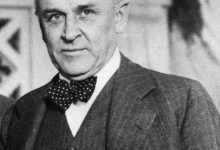Abu Muslim Khorasani; The leader of the Black Jamgan movement

 Abu Muslim Khorasani
Abu Muslim KhorasaniAn abstract of Abu Muslim Khorasani's biography:
Full name: Behzadan Pour Vandad Hormazd
Date of birth: between 100 and 105 lunar years
Place of birth: the cities of Pushang (near Herat) or Kufa or Isfahan
Other names: Abu Muslim Khorasani
The reason for the fame: the uprising against Amyan and the establishment of the Bani Abbas government
Died: Sha'ban 137 lunar month
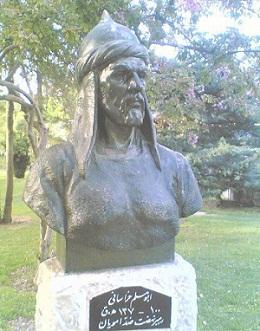 Biography of Abu Muslim Khorasani
Biography of Abu Muslim KhorasaniBiography of Abu Muslim Khorasani:
Behzadan Pour and Dad Hormazd nicknamed Abu Muslim Khorasani was born between 100 and 105 lunar years in the cities of Pushang (near Herat) or Kufa or Isfahan. The narratives about Abu Muslim's parents and descendants are scattered and contradictory. In some of these reports, there are positive or negative biases that were created by Abu Muslim's opponents such as Bani Abbas, as well as his supporters or opponents of Bani Abbas.
In some sources, Abu Muslim's name is Ibrahim bin Khatkan and his nickname is Abu Ishaq, but in another place he is called Ibrahim bin Uthman. Some historians have named his descent as Persian and his name as Behzadan bin Bandad Hormoz.
Abu Muslim's father, Bandad, has been introduced, but after converting to Islam, he changed his name to Othman. On the other hand, it has been stated that when he met Abu Muslim bin Muhammad, who was an Abbasid imam, he asked him to change his nickname and name to Abu Muslim Abdurrahman bin Muslim so that he could work better. The cities of Pushang (near Herat), Kufa and Isfahan are recorded as the birthplace of Abu Muslim.
In most of the historical texts, Abu Muslim's father has been introduced as an Arab or as an Arab loyalist, some sources have also introduced his father as a resident of one of the villages of Isfahan, who made a living as a farmer, and then in the service of Idris bin Moqal. Ajli arrived and died shortly before or after the birth of Abu Muslim.
The period of activity of Abu Muslim was at the same time as the Imamate of Hazrat Jafar Sadiq (AS), the caliphate of Hosham bin Abdul Malik. Abu Muslim in Sha'ban 137 according to the order of Mansour Abbasi; The second caliph of Bani Abbas was killed, it is said that Mansur killed him due to suspicion, fear of rebellion and disobedience of Abu Muslim.
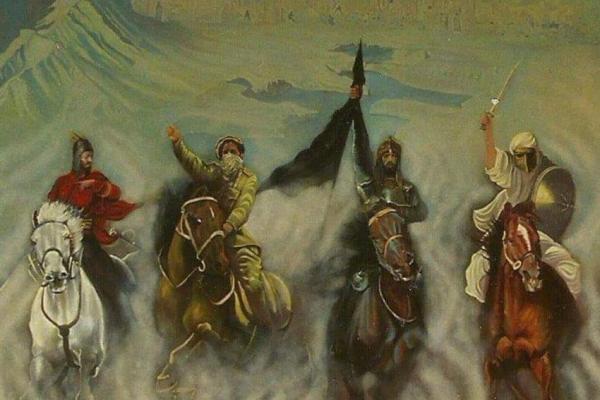 Battles of Abu Muslim Khorasani
Battles of Abu Muslim KhorasaniJoining the invitation of Bani Abbas:
In the historical sources that mention the life of Abu Muslim; There is a person named Musa Siraj or Abu Musa Siraj or Isa bin Musa Saraj who lived in Kufa. He was engaged in work related to saddle and bridle, and Abu Muslim was with him as a student or worker. This person was known as one of the supporters or advocates of Banu Abbas, for this reason Abu Muslim got to know other Abbasid advocates in Iraq, especially Kufa, during his trip with him.
Some have stated that between 114 and 120 AH, Abu Muslim was the link between the imprisoned and freed advocates and Abu Musa Siraj.
These claimants then introduced Abu Muslim to the Abbasid imam, Ibrahim bin Muhammad bin Ali, known as Ibrahim the Imam. Some people have written that Abu Muslim had a relationship with Muhammad bin Ali, Abraham's father. After the death of Muhammad bin Ali as a slave of al-Ma'ql, Abu Muslim was the mediator between the two Banu Abbas supplicants, Bukair bin Mahan (prisoner in Kufa) and Abu Salma Khalal, Bukair's son-in-law.
Abu Muslim, shortly before Yahya bin Zayd was killed in Jawzjan, along with a number of Khorasan preachers left for Mecca to see Abraham. After the death of Bekir Usliyeh, he returned to Khorasan with the aim of revealing the uprising and started wearing black clothes, and took Abu Muslim with him.
In 127 or 128 of the lunar year, Abu Muslim along with Abu Salama had a meeting with Ibrahim at a place called Sharat. At that time, Ibrahim praises Abu Muslim's cleverness and Abu Salama also handed him over to Ibrahim, Ibrahim asked him to change his nickname and name.
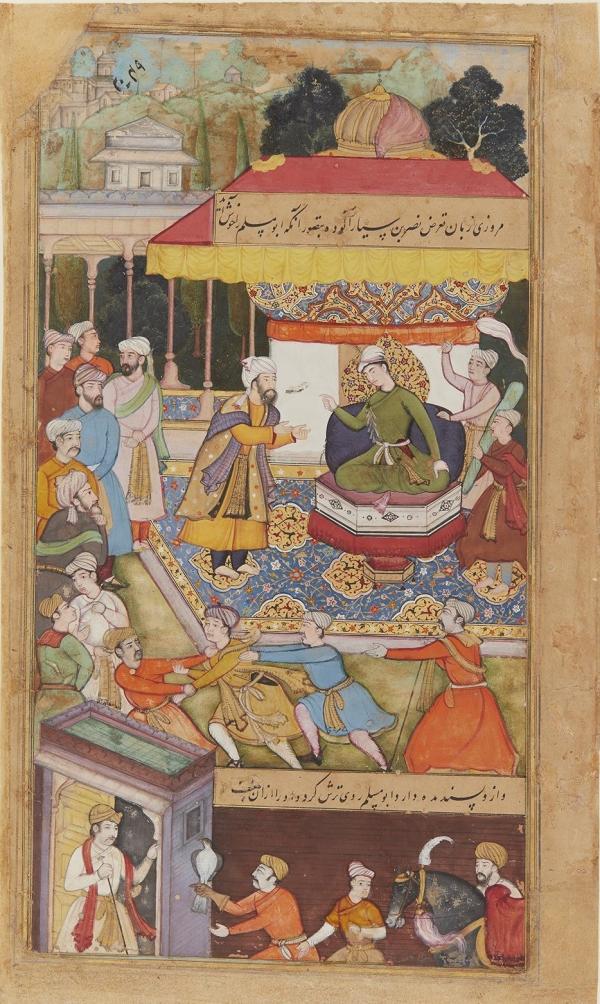 Abu Muslim Khorasani joined Bani Abbas
Abu Muslim Khorasani joined Bani AbbasThe uprising of Abu Muslim against Bani Umayyah:
In the year 129 of the lunar year, Abu Muslim went to Khorasan according to the order of Ibrahim Abbas, and Ibrahim also ordered his followers to follow him. At that time, the differences between the Arab tribes in Khorasan were rising, and Nasr bin Siyar, the Umayyad ruler, could not control the affairs.
When Abu Muslim started his work, he faced strong opposition from Sulaiman bin Kathir, a famous preacher of Khorasan, but he cooperated with Abu Muslim after a while. Abu Muslim settled in the village of Sefidanj Maro and transferred people to Takharistan (Taleqan), Khwarezm and the surrounding areas of Maro to coordinate and attract more people.
It was decided that Abu Muslim's uprising would start in Muharram 130 lunar year, but Nasr bin Siyar was informed and the uprising started on Eid al-Fitr in 129 lunar year by wearing black clothes and performing Eid al-Fitr prayers in Sefidanj. 18 days after this uprising, Abu Muslim was able to achieve his first victory against Nasr. In 130 lunar year, he entered Marv and took allegiance from the people, and then the commander of Abu Muslim's forces, named Qahtaba bin Shabib Tay, occupied the cities of Tus, Neishabur, Jurjan, and Qommes. He passed away and his brother Abdullah bin Muhammad Safah replaced him.
Some time after this event, the sons of Qahtaba named Hassan and Hamid entered Kufa with their army and pledged allegiance to Safah along with Abu Salama. Marwan bin Muhammad was also killed in Egypt.
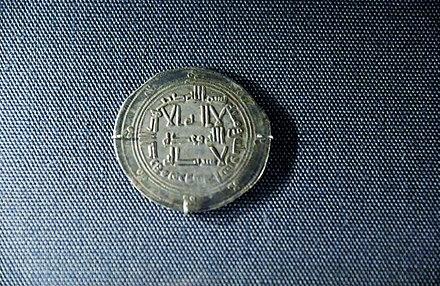 Coins of the era of Abu Muslim Khorasani
Coins of the era of Abu Muslim Khorasani Abu Muslim's relationship with Alawites and Shiites:
In historical sources, it is mentioned that Abu Muslim's true view regarding Alawites and Shiites was ambiguous. Tabari has given a narration about Abu Muslim which indicates his relationship or affinity with Mughira bin Saeed, the leader of the Ghalian group in Kufa (119 AH) and also his acquaintance with Malik bin Aayon Jahani, one of Imam Sadiq's narrators.
There is no information about the position that Abu Muslim had regarding the uprising of Zayd bin Ali and his son Yahya bin Zayd, if according to the news that exists, it is clear that the Abbasid advocates and supporters did not cooperate with these uprisings. In the 130th lunar year after the conquest of Merv, Balkh and Jawzjan; Abu Muslim brought down the body of Yahya bin Zayd, who was hanged on the gallows, prayed over it and buried him.
In the same year, Abu Muslim also ordered the killing of Abdullah bin Muawiyah, the grandson of Abdullah bin Jafar bin Abi Talib. Abdullah had revolted against the Umayyads in 127 AH, but after the defeat, he came to Herat with the idea of receiving help from Abu Muslim. A few months after the beginning of Safah's caliphate, Abu Muslim executed Suleiman bin Kathir for the crime of collaborating with the Alawites.
After that, Abu Muslim suppressed the movement of Sharik bin Sheikh, who was in Bukhara, and killed him. Some historians believe that he was a Shiite in the nature of this uprising. A group also believes that Safah consented to the killing of Abu Salama. The effect of realizing his connection with the Alevis happened.
Balazri (died 279 AH), a historian of the third century, wrote in the book Ansab al-Ashraf that Abu Muslim instructed Abu al-Abbas Safah to move his seat of government from Kufa to another place because of its people's preference for Ali's family.
Abu Muslim's bloodlust:
After the death of Abu Muslim, a number of people and currents with different opinions rebelled against Bani Abbas due to blood lust and his support. Among these people and currents, we can mention Sanbad, Ishaq Turk, Moqana, Ravandiya current and Khorram Dinan current.
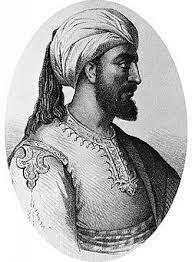 Biography of Abu Moslem Khorasani
Biography of Abu Moslem Khorasani compilation: Cover biographical section
